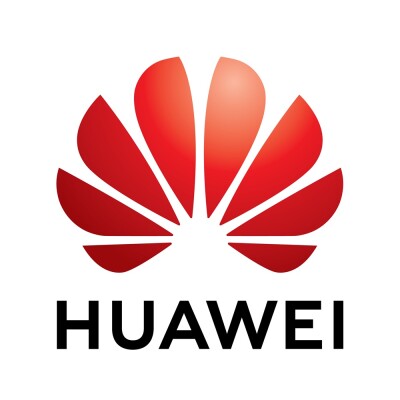Cloud Native Security – The Future of Cyber Defense in a Digitized World


The rapid evolution of digital ecosystems has ushered in an era where businesses no longer rely solely on traditional IT infrastructures. Instead, they are embracing distributed, containerized, and microservices driven environments that demand a fundamentally different approach to security. In this dynamic landscape, cloud-native security has emerged as a cornerstone of resilience, safeguarding applications and data across public, private, and hybrid cloud infrastructures.
Unlike legacy security models that were designed for static, on-premises systems, cloud-native security is inherently adaptive. It embeds security controls seamlessly into development pipelines, orchestrating protection from code creation to runtime execution. This shift is not merely a technological upgrade but it represents a cultural and operational transformation where speed, agility, and scalability must coexist with uncompromised security.
Organizations across diverse sectors from finance and healthcare to telecommunications, manufacturing, and public services are depending on advanced security frameworks to protect sensitive information, ensure regulatory compliance, and maintain operational continuity. With the proliferation of DevOps and the integration of security into early stages of the development lifecycle, businesses are moving toward a DevSecOps mindset that prioritizes proactive defense rather than reactive measures.
Emerging innovations in this field like Security as a service are reshaping the security paradigm. From real-time anomaly detection and automated compliance management to AI-driven analytics and zero-trust architectures, these advancements empower organizations to anticipate threats rather than simply respond to them. Beyond being a defensive mechanism, cloud-native security is fast becoming a strategic enabler, facilitating innovation, accelerating digital transformation, and providing the scalability required in a multi-cloud world.
As enterprises push the boundaries of digital adoption, the role of cloud-native security evolves from a technical necessity to a competitive differentiator. It ensures not only the protection of digital assets but also the trust, reliability, and operational excellence that define modern business success.
Cloud Native Security Status, 2024
Source: Linux Foundation Survey for Cloud Native Computing Foundation (CNCF)
Global Horizons: Unveiling the Big Picture:
Organizations across the globe are making significant investments in cloud infrastructure, services, and operational optimization to accelerate digital transformation and business expansion. Recent trends indicate a substantial rise in cloud spending, with more than 50% of enterprises allocating over $10 million annually toward cloud solutions, according to Palo Alto Networks. This widespread adoption underscores the growing reliance on cloud technologies to enhance agility, scalability, and innovation. As businesses increasingly integrate cloud-driven models into core operations, these investment patterns are expected not only to continue but to intensify, positioning cloud as a critical enabler of future-ready enterprises.
Cloud Spending Snapshot, Regional Investment Patterns, 2024
Source: Palo Alto Networks
Across regions, cloud spending trends reveal nuanced yet meaningful variations. Australia, Mexico, and Singapore demonstrate strong investment in higher spending brackets, reflecting their aggressive digital transformation strategies. In contrast, the United States and the United Kingdom maintain substantial investments, though primarily within moderate ranges. Meanwhile, markets such as France and Germany display a mature yet measured approach, with most allocations concentrated between €9 million and €46 million, signalling cautious but steady adoption.
On the other hand, emerging markets like Brazil and India, as well as Japan, exhibit a greater proportion of organizations allocating less than $10 million annually, 40%, 41%, and 43% respectively. This trend likely reflects a combination of a higher presence of small to mid-sized enterprises and conservative spending strategies in these regions.
Cloud adoption maturity is a key driver of these spending patterns. Organizations with “Extensive Integration” or “Fully Native Environments” consistently outspend those with “Basic Infrastructure” setups. For instance, in the U.K., 76% of businesses investing over $10 million annually have achieved advanced cloud integration, compared to only 32% among those spending below this threshold. This trend holds across all regions, underscoring the direct correlation between cloud maturity and increased investment, driven by the adoption of advanced cloud services, architectures, and scaling initiatives.
Countries with the most all cloud-native environments
Source: Palo Alto Networks
Regional maturity trends reveal that Australia (26%), Singapore (26%), and the United States (24%) lead the way, with nearly a quarter of organizations in each region operating fully cloud-native environments. France (17%) and Germany (14%) follow, reflecting steady progress but at a more moderate pace.
As organizations expand their cloud investments, their strategies for application deployment are also becoming more sophisticated. Larger enterprises, in particular, demonstrate a stronger inclination toward advanced deployment models driven by greater financial resources, complex operational requirements, and a strategic commitment to innovation.
Fortifying the Future: Key Security Obstacles in Cloud-Native Infrastructures
- Rise of AI-Driven Cyberattacks:
Cyber adversaries are now using AI-powered techniques to design more sophisticated and evasive attacks. Machine learning models enable attackers to automate reconnaissance, develop adaptive malware, and bypass anomaly-based detection systems. These attacks exploit cloud APIs, misconfigured workloads, and unsecured data flows at scale. To counter this trend, enterprises are adopting AI-driven defense tools, behavioural analytics, and continuous monitoring to detect and neutralize threats in real time.
- Growing Insider Threat Risks:
The complexity of identity and access management in multi-cloud environments increases the potential for insider threats both malicious and accidental. Employees, contractors, or third-party vendors with elevated privileges can unintentionally misconfigure systems or deliberately exfiltrate sensitive information. Since insider threats often operate within trusted boundaries, traditional perimeter defenses are ineffective. Implementing zero-trust security models, continuous user behaviour analytics, and strict privilege escalation controls is essential to minimize these risks.
- API Security Vulnerabilities:
APIs are critical for cloud-native application communication, but insecure API implementations significantly expand the attack surface. Common vulnerabilities include weak authentication, improper rate limiting, over-permissive access, and data leakage through exposed endpoints. Attackers increasingly exploit these weaknesses to inject malicious code, manipulate business logic, or extract sensitive data. Organizations need robust API security strategies that include API gateways, encrypted data transmission, and real-time API activity monitoring.
- Security Risks in CI/CD Pipelines:
Continuous Integration and Continuous Deployment (CI/CD) pipelines are essential for agility but can inadvertently introduce security flaws. Vulnerabilities in third-party libraries, insecure secrets management, and compromised build environments can lead to supply chain attacks a rising concern in the cloud-native era. Security needs to be embedded into the pipeline through DevSecOps practices, automated code scanning, and real-time monitoring of deployment environments to prevent exploitation before production.
Future-Proofing Cloud-Native Security: Strategies for a Resilient Digital Ecosystem:
- Platformization as a Strategic Imperative:
Enterprises often struggle with fragmented security tools, which result in visibility gaps, higher operational costs, and slower response times. To overcome this, businesses should transition toward a centralized, architecture-agnostic security platform. Such a platform offers end-to-end protection across applications and data, while also enabling scalability as organizations mature in their cloud adoption. By choosing a solution that supports future expansion into advanced use cases such as container orchestration and serverless workloads enterprises can simplify integration, reduce training costs, and achieve greater operational efficiency. This unified approach ensures that security evolves alongside cloud innovation rather than lagging behind it.
- Secure Adoption of Artificial Intelligence and Automation:
AI-powered development tools and Generative AI are reshaping software delivery, enabling faster coding cycles and automation of critical processes. However, these advancements introduce new vulnerabilities, including insecure AI-generated code, data leakage during model training, and increased attack surfaces through AI-driven applications. To address these risks, organizations must implement strict governance policies for AI usage, integrate automated security testing into CI/CD pipelines, and establish secure development environments for both traditional and AI developers. Additionally, implementing Data Security Posture Management (DSPM) tools can prevent sensitive data from being used in model training, reducing compliance risks while maintaining innovation.
- Optimizing DevOps with Secure-by-Design Practices:
Security bottlenecks in CI/CD pipelines can slow down software delivery and hinder agility. To minimize friction, organizations should adopt a shift-left approach, embedding security measures early in the development lifecycle. Automated vulnerability scans, Dynamic Application Security Testing (DAST), and Software Composition Analysis (SCA) tools within CI/CD workflows enable rapid detection and remediation of risks. This approach not only accelerates time-to-market but also reduces the cost of late-stage fixes, ensuring security becomes an enabler rather than a barrier to innovation.
- Fostering a DevSecOps-Driven Culture:
One of the most critical success factors for cloud-native security is cultural alignment between development, operations, and security teams. Traditional silos often create conflicting priorities, slowing down response times and increasing risk exposure. By promoting a DevSecOps mindset, supported by continuous education and shared performance metrics, organizations can integrate security into everyday development practices. This collaborative framework ensures that security, speed, and innovation coexist, driving long-term resilience in an evolving threat landscape.
DevOps Vs DevSecOps
| Area of Differentiation | DevOps | DevSecOps |
| Collaboration | Promotes collaboration between development and operations teams to enhance pipeline efficiency. | Builds on DevOps by adding security teams, fostering a culture where security is a shared responsibility. |
| Security Automation | Focuses on automating development, testing, and deployment processes. | Automates security functions, including vulnerability scanning and security testing. |
| CI/CD Pipelines | Implements CI/CD pipelines to enable faster and more frequent releases. | Integrates security checks and compliance validations within CI/CD pipelines. |
| Efficiency and Culture | Emphasizes ownership, transparency, and continuous improvement. | Adds accountability and security awareness, creating a culture of proactive risk management and collaboration. |
Cloud-native technologies have redefined the digital landscape, enabling organizations to innovate faster, scale effortlessly, and stay competitive in a dynamic market. However, this rapid evolution also brings unique security challenges that demand a proactive and integrated approach. Security in cloud-native environments can no longer be treated as an afterthought; it must be a core element of every stage of development and deployment.
As businesses embrace multi-cloud strategies, AI-driven processes, and automated CI/CD pipelines, the need for robust and adaptive security frameworks becomes critical. Future-ready enterprises will rely on unified security platforms, strong DevSecOps practices, and intelligent data governance to maintain compliance and minimize risks.
Cloud-native security is not just about preventing threats but it is about enabling growth with confidence. By investing in platform-based solutions, strengthening identity and access controls, and embedding security into the development lifecycle, organizations can reduce vulnerabilities while maintaining speed and agility.
The path forward is clear: organizations that prioritize security as a strategic advantage will not only safeguard their operations but also enhance customer trust and business resilience. In a world where innovation and risk run side by side, strong security is the key to sustainable success in the cloud-native era.
Source: https://www.industryarc.com/
Analyst Bio:
Viksha is a seasoned researcher with experience in market research, trend analysis, and strategic forecasting. She specializes in delivering actionable insights across diverse sectors, enabling businesses to make informed, growth-oriented decisions. With expertise in both qualitative and quantitative methodologies, Viksha has successfully managed global projects involving competitive benchmarking and market opportunity assessment. Her strong analytical acumen and client-focused approach make her a trusted partner for data-driven strategies. Passionate about emerging technologies and evolving market dynamics, she is dedicated to driving innovation and sustainable business success.
The post Cloud Native Security – The Future of Cyber Defense in a Digitized World appeared first on European Business & Finance Magazine.















































